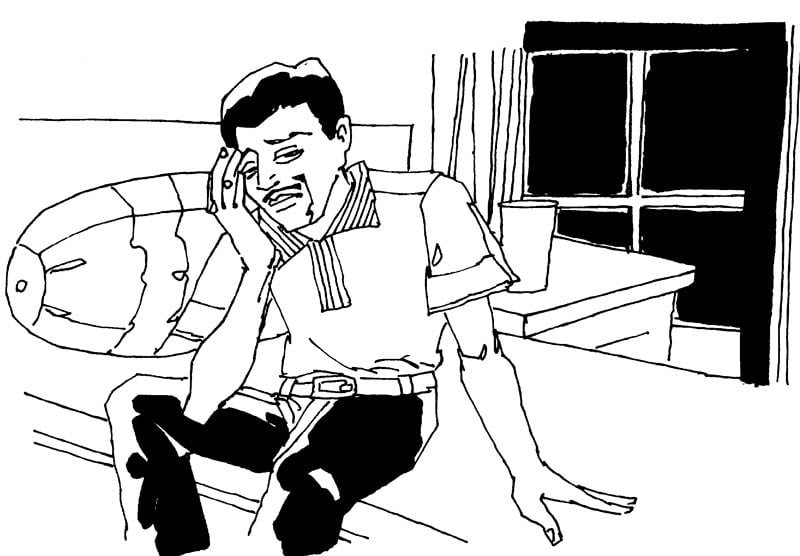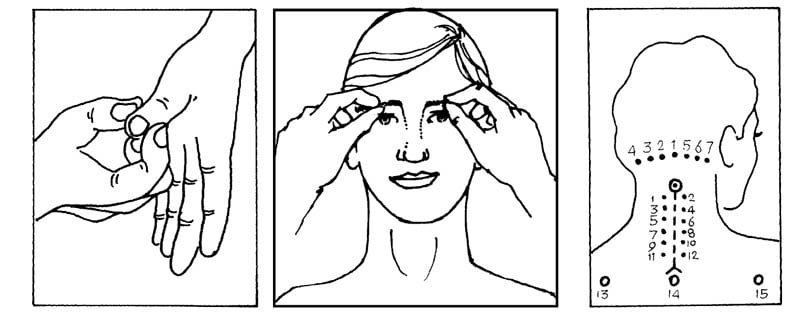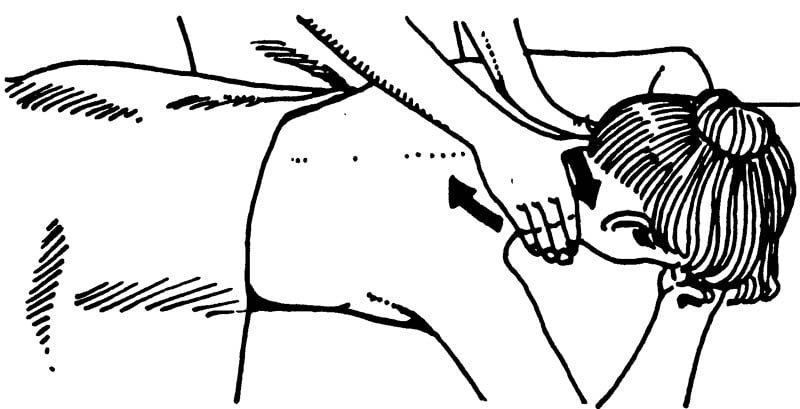
Nonpharmacologic (without medication) treatment techniques can be classified as active and passive. Active techniques require patient involvement, responsibility and participation, focusing on such activities as keeping headache calendars, making nutritional changes, exercising, practicing relaxation techniques and modifying behaviour that may contribute to headaches. With passive techniques, patients simply receive treatments without modifying their behaviour.
Headache Calendar
Headache calendars are daily logs of anything that might relate to your headaches; and are vital to appropriate treatment.
A headache calendar helps a patient record ongoing information about the frequency, intensity, and duration of headaches. It can also help patients monitor how and when to take medication track its effectiveness, and document potential headache triggers. It also helps to show any relationship between headaches and a woman’s menstrual cycle. Each calendar represents 1 month of headache activity. Doctors ask out patients to record headache intensity, timing, medications used and triggers.
These calendars also help doctors to monitor their patients progress. The first calendar is used as a baseline and at follow-up visits, we review any changes in the calendar, and record them as percent change from the baseline. Patients who take frequent doses, or large quantities of pain relievers or ergotamine, use the calendars to follow a specific programme, the goal of which is to decrease and effeminate daily use of these medications.
Relaxation Techniques
The goal of relaxation techniques is to reduce the ‘fight’ response and levels of substances the body produces in response to stress. Also used in biofeedback therapy, deep, rhythmic breathing techniques are the basis of all relaxation strategies. To try deep breathing, sit in a comfortable chair in a quiet environment; loosen your collar and belt, and close your eyes. Inhale (breathe in) deeply and slowly, making sure that your abdomen moves fast than your chest. At first, inhale to a count of three, working your way up to ten. When you reach your peak, hold it for a second or so and then exhale (let it out) slowly to the same count.
Progressive relaxation : Tense your toes slowly as you inhale to a slow count and then relax them as you exhale. Then move up your body, alternately tensing and relaxing muscles of your calves, thighs, buttocks, abdomen, back, fingers, arms, shoulders, neck, and finally the muscles of your head and jaws.
Body scan
Senior researcher at the New England Institute for Behavioural Medicine, Steven Baskin, Ph.D. and Randall Weeks, Ph.D., teach their patients how to perform a ‘body scan.’ They suggest that their patients remain alert for signs of tension in the head, neck, shoulders, arms, or legs throughout the day. Without realizing it many people hunch their shoulders, which creates muscle tension in the shoulders, neck, and head. Or they may contract muscles around the neck or head, or clench their jaws or fists. People who check for these signs of tension throughout the day may be able to reduce muscle tension and decrease the effects of stress on the body. This type of body scan can be accompanied by deep breathing and other relaxation techniques.
Get in the habit of stopping while you are doing once every hour to check for sips of muscle tension and to take a quick deep breathing/relaxation break. Relax with gentle neck rolls, allow your chin to fall to your chest, then gently rotate your head right and left 5 or 10 times. If you work on a computer for hours at a time, take a few minutes every hour to cup your hands over your eyes, giving your eyes a chance to rest.
Biofeedback is commonly used in the treatment of both tension-type headache and migraine. It has not been found used in cluster headache. Biofeedback may be administered by a clinical psychologist trained in the technique, or by a trained biofeedback technician. Effective in children and adults, the goal is to reduce symptoms and ultimately to eliminate the need for feedback.
Biofeedback works because electronic equipment senses information such as temperature or muscle tension and gives you auditory or visual ‘feedback:’ Over time, the combination of feedback and reinforcement helps you to control muscle tension, temperature and other functions.
Cognitive Therapy
Cognition means thinking. Many people have negative feelings and they translate these into such statements as I will never get rid of my headaches. Cognitive therapists believe that if you can change your thoughts, you can change the feelings associated with these thoughts. Cognitive therapy has proven successful in treating anxiety disorders and depression. It has also proved useful in treating headache disorders. Psychologists and other health-care professionals who practice cognitive therapy and help you challenge these negative way you feel.

This can give you a more positive, optimistic and ultimately a less destructive way to think, feel, and be have.
Psycho therapy
Psychotherapy alone has not been found useful as a headache treatment. If, however, headaches are accompanied by psycho-logical difficulties, marital problems, job-related difficulties, depression, anxiety and other problems, psychotherapy can help.
Group therapy, particularly in the form of support groups, has been useful for headache sufferers as well as patients with a variety of chronic illnesses.
Autogenic training
Try repeating a series of phrases to yourself to suggest changes such as feeling warmth and heaviness. You might, for example, repeat, “my legs are warm and heavy,” while associating this with a pleasant feeling. Move up the body as described for progressive relaxation.
Visual Imagery
Help to relax the head and neck muscle’s by visualizing them as tight, scrunched, uneven, crooked, crossing lines. Then focus on making the lines smooths, straighter, and evenly spaced. Visualize yourself on a sandy beach with your hands under the hot sand. Now feel the sand warm your hands.
Exercises that focus on warmth may help patients with migraine, many of whom tend to have cold hands and feet. Done successfully, visualization can divert blood flow from the head to the hands and/or feet while bringing on a state of relaxation.
Lifestyle Changes
All of the techniques described in this chapter require you to review and modify various aspects of your lifestyle. Calendars can be useful in helping you to identify potential headache—provoking or stressful situations and trigger factors, including food. Remember to eat a healthful, balanced diet at regular times each day. Exercise is vital for reducing headache and maintaining good health. So is sleep.
Since many patients focus on others’ needs but leave little time for themselves, we suggest that our patients use an appointment book to schedule time for themselves.
Acupuncture
Acupuncture, an ancient Asian healing art, involves placing needles in the skin at specific points. Acupuncture corrects what are termed imbalances between the two parts (yin and yang) of a life force. The needles cause minimal or no pain or discomfort. If you have no response after six or eight sessions, this probably will not work for you.
Acupressure
Acupressure is a technique based on acupuncture. Some have found using the thumb and fore finger to squeeze the web between the thumb and forefinger of the other hand effective in aborting migraine.

For tension-type headache, pressure can be applied to the small indentations approximately midway between the outer border of the eye and the inner border of the ear and also at the back of the head.
Chiropractic Therapy
Chiropractic therapy is based on the theory that most diseases of the body are a result of misalignment of the vertebral column. The goal of the treatment is to realign the vertebrae through the use of manual techniques called ‘adjustments.’ Many neurologists question the validity of chiropractic therapy and are concerned that aggressive manipulation, or adjustments, of the neck may injure important structures such as the blood vessels that supply the brain.
Physical and Occupational Therapy
Physical therapy has been used in headache disorders and, in particular, in tension-type headache, where the neck and shoulder muscles may be involved. Heat and massage have been tried as muscle relaxants since antiquity, and newer techniques such as ultrasound, which deliver deep heat to muscles, have been shown to be helpful in reducing spasm and tenderness. Electrical stimulation may also be beneficial.
Many patients may benefit from improvement in posture and these, patients may be given appropriate exercises to do at home. Other treatments such as active and passive stretching increase, the range of motion about the neck.
Some patients’ occupations contribute to muscle tension. Computer users, administrative personnel and telephone operators may all develop tense muscles in their backs and necks as well as postural problems that contribute to tension-type headache. Frequent breaks and professional attention to posture may help.
Application of cold to the head may help to constrict dilated blood vessels, override pain transmission, numb the skin and reduce metabolic activity in muscles, contributing to the relief of pain.
Massage Therapy

Massage can reduce muscle tension in various parts of the body and it can reduce headache. A variety of techniques are practiced by licensed massage therapists.
Trigger Point Injections
Occurring in various parts of the body, trigger points are small areas that feel like knots of muscle tissue; they are tender to touch and may refer pain to various areas of the head. The exact cause of trigger points is not fully understood. However, an injection of local anesthetic into these tender points can be helpful.
Transcutaneous Electrical Nerve Stimulation (TENS)
TENS blocks the transmission of the pain with electrodes placed on the skin between pain and brain. At this time, the results of TENS therapy for headache have been somewhat disappointing, though this therapy has proven more successful in treating other types of chronic pain. A new type of low-intensity stimulation to the ear lobe is being tested.
Naturopathy and Homeopathy
These two disciplines represent alternatives to traditional medical treatments and are attractive to some patients who want to avoid pharmacologic therapy. Naturopathy uses only natural substances in small amounts. Homeopathy uses natural substances as well as minute amounts of the active ingredients in some medications. Traditional physicians would view the amounts of these medications as far too small to produce a therapeutic response and term any effects a placebo response. All the same, many patients seem to have benefited from these approaches.
Herbal Therapy
A variety of herbs has been used to prevent migraine, the most popular of which has been Feverfew, which is derived from the Chrysanthemum family of plants. A small, placebo-controlled trial, published in the British Medical Journal suggests that it may, indeed, prevent migraine in some patients. Feverfew is available in several forms and dosages.
Magnesium
Magnesium is a trace element found in the body. Some scientific evidence suggests that magnesium levels are lower in the brains of migraine patients. Use of magnesium to treat migraine is under study.
Vitamin Therapies
We suggest 50 mg of vitamin B6 and 400 international units of vitamin E daily. In an international meeting of neurologists in Boston, Professor Jean Schoenen of Belgium reported that vitamin B2 (riboflavin) proved specifically better than placebo in preventing headache when taken in a dose of 400 mg per day. High doses of vitamin A are not only potentially toxic, they may cause headache. Some say vitamin C helps headache; however, results are inconsistent.
Garlic and ginger
Some patients have found that garlic and ginger have properties that might be useful in migraine.
Ginseng
Ginseng has properties to decrease tension and relieve headache. It is available as a tea and in capsules, tablets, and dried root powder, Ginkgo Biloba and Valerium root have been touted as effective by patients.
Note : Do not use any of the above mentioned without first checking with your doctor.

